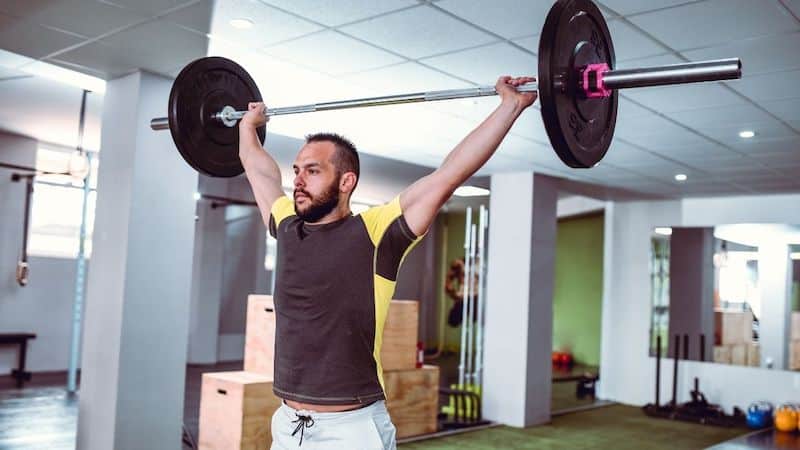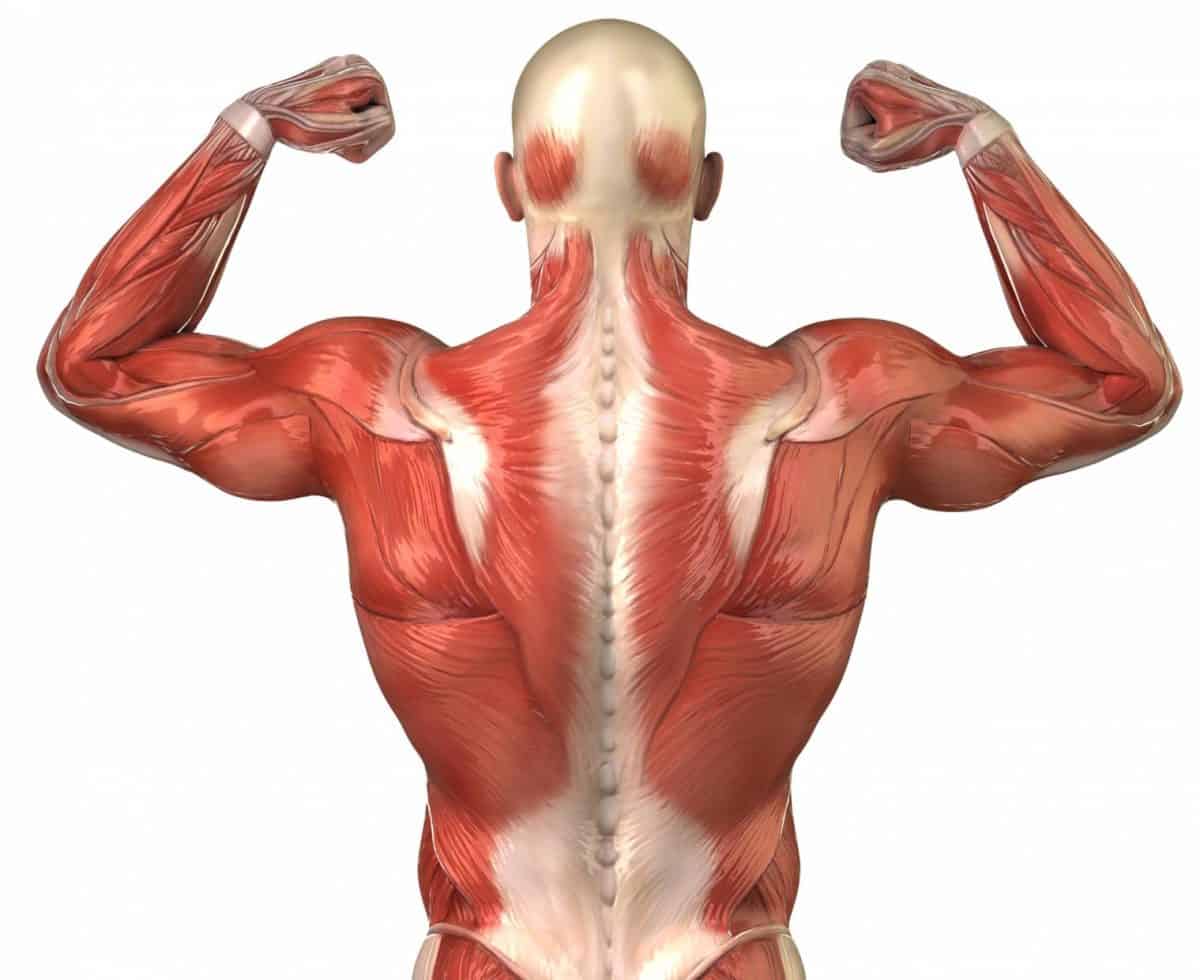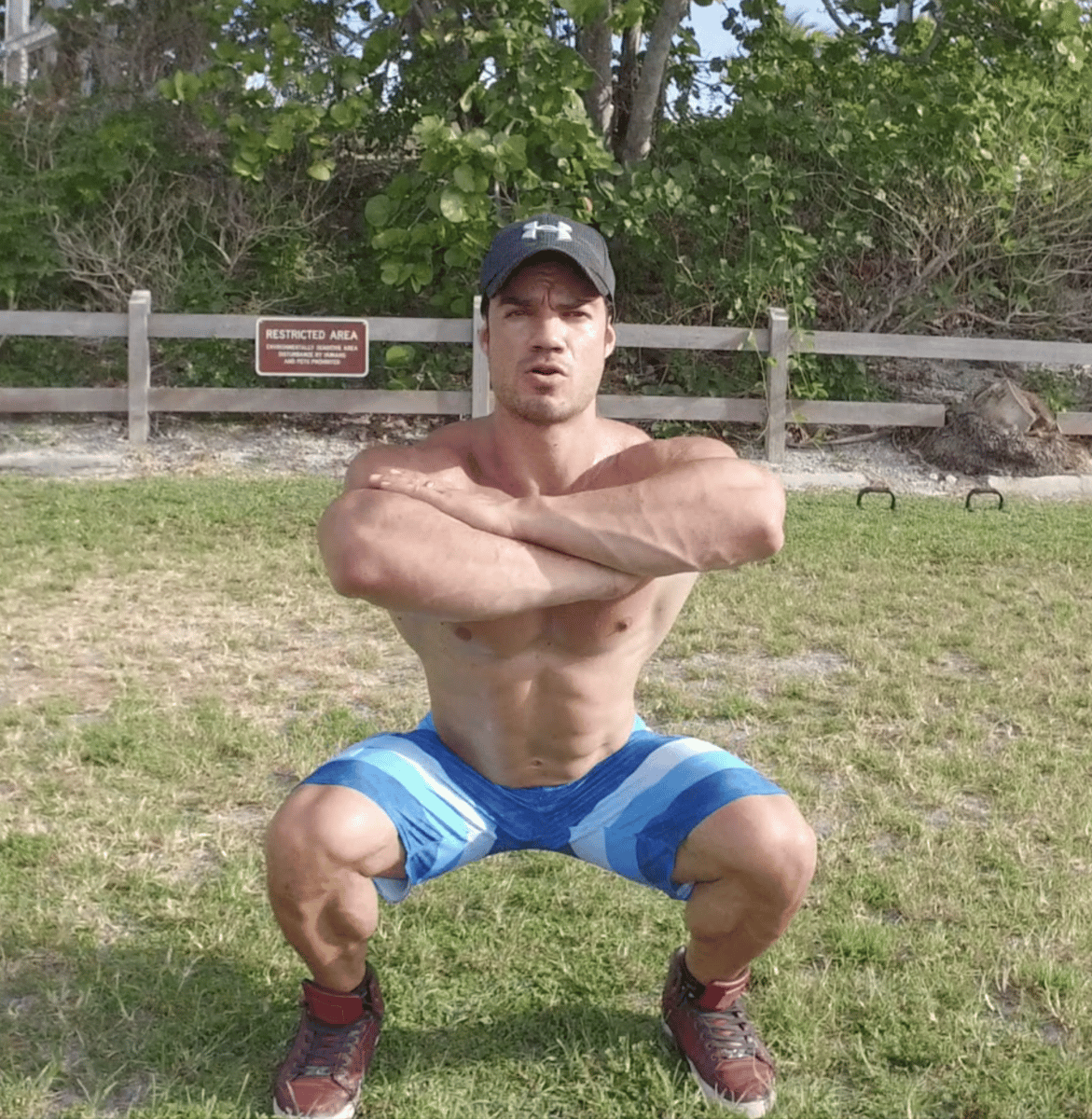The multi-joint exercises are the foundation of many strength training programs. These basic movements mobilize several muscle groups and are therefore particularly suitable for beginners who want to build muscle quickly. Complemented by isolation work, these exercises are also very useful for advanced exercisers. Find out everything you need to know about polyarticular movements in order to reach your sports goals.
What is polyarticular exercise?
Definition of a polyarticular exercise
As the name suggests, a polyarticular movement (or basic movement) is an exercise that simply allows you to work different joints, and therefore several muscle groups. The polyarticular exercises most commonly practiced in weight room and fitness exercises are without a doubt the bench press, deadlift and squat.
The basic movements are different from work in isolation. The latter aims precisely at targeting the work done on a given muscle to optimize the muscle strengthening. By definition, because several muscles are used at the same time, you will be stronger and lift more weight in a multi-joint exercise. For example, if you perform a bench press, the loads used will be heavier than if you perform a pectoral isolation exercise such as the barbell split. On the other hand, the number of reps will probably be lower than in an isolation exercise (or single-joint exercise).
Monoarticular exercises can be used to correct imbalances or to make up for lost time. In the same way, certain muscles cannot be developed efficiently if they are only solicited with polyarticular movements. These two work methods are therefore perfectly complementary. To develop your muscles in a harmonious way, your training program should include both basic strength training and isolation movements.
The advantages of polyarticular work
If you are beginner and you want to achieve a quick mass gain, it is advisable to do basic exercises at each workout. They should be the basis of your training, as they allow you to obtain an excellent muscle recruitment and to progress rapidly from the first weeks.
In addition, the basic exercises increase the physical strength athletes. The loads supported being more important, these movements solicit the muscles as well as the nervous system and allow you to lift more weight. They also develop endurance and physical condition.
But polyarticular movements are also a way to lose fat. They require a lot of intensity to be achieved and burn more calories. This is also after your session at the gym thanks to a better activation of the metabolism. If your goal is to lose weight, it is essential to integrate this type of exercise into your weight training program.
Finally, these exercises allow you to optimize the time spent at the gym. By working several muscle groups at the same time, you can reduce the overall duration of your workouts. This is a good option for weight trainers with a particularly busy schedule.
The disadvantages of polyarticular work
Despite all the advantages of polyarticular movements, I would like to remind you that it is important not to neglect isolation work. If they allow you to develop your muscles or lose weight, basic exercises can also be responsible for imbalances which it will then be extremely difficult to correct.
Let's take the example of bench press, a key exercise to develop the upper body. This movement solicits primarily the pectoral muscles, but it also recruits the shoulders and triceps. But for you sculpting a harmonious body to develop certain portions of the pectoral muscles, you will need to complement your training with isolation exercises such as the barbell splits, the pec deck or the pulley exercises.
Finally, considering the loads used, the basic exercises require a perfect movement execution. If you don't, you may be at risk of hurt. If you are new to weight training or fitness, it is essential to work on the quality of your movements before trying to lift heavy weights. You can of course call upon the services of a sports coach to accompany you in this learning process.
Who should use multi-joint strength training exercises?
The polyarticular movements are intended for all those who aim to to get stronger. As already mentioned, they are particularly suitable for beginners who want to develop their muscle mass. However, they must ensure that they have mastered the technique of performing these exercises before incorporating them into their strength trainingThey must not be allowed to suffer injuries that could hinder their progress.
Of course, basic exercises are just as useful for advanced athletes. A complete training program should be composed of polyarticular exercises and movements in isolation. Of course, you may want to mix and match these two methods for each muscle group depending on your expectations and level of fitness to achieve your goals.
Want to gain muscle volume cleanly, but don't know how and where to start? Discover my Physique Pro Mass weight training program. During 12 weeks, you will learn to gain dry muscle through adapted weight training exercises and personalized nutritional advice.
What are the most popular basic exercises?
Multi-joint exercise for the back: the deadlift
The deadlift (or deadlift) is an extremely complete movement of musculation. It is regularly used by bodybuilding and crossfit enthusiasts. This fundamental exercise aims to develop many muscles of the body, mainly at the level of the back (erector spinae muscles, lats, rhomboid, trapezius), legs (quadriceps, hamstrings, calves, glutes) and abdominal muscles.
Be careful, however, to be carried out in complete safety, the deadlift requires a perfect technique of execution. Here again, it is preferable to start with very little weight to assimilate the movement well. The increase in weight must then be done in a progressive way.
The deadlift has many variations that allow you to focus on other muscles, such as the sumo deadlift or the Romanian deadlift.
The bent-over chest rowing is another classic multi-joint exercise for develop the back. It is a pulling movement to be carried out with a bar. This exercise solicits in priority the large dorsal and the large round, two muscles of the back. But it also makes it possible to work the posterior deltoids, the rhomboid and, to a lesser extent, the middle trapezius.
Finally, the pull-ups and its different variants are an excellent polyarticular exercise body weight.
Polyarticular exercise for the shoulders: the military bench press
Made with dumbbells or with a bar, the developed military is undoubtedly the best way to get broad shoulders.
At the level of the shoulders, the anterior deltoid and the middle deltoid are particularly solicited. This is also the case for the upper part of the pectorals. Finally, the triceps and trapezius will not be left out.
As with the deadlift, it is best to start with light loads to avoid traumatizing your joints and risking injury.
Multi-joint exercise for the pectoral muscles: the bench press
The bench press (or bench press) remains the king exercise for to build up the pectoral muscles. It can be carried out with a bar or dumbbells, and also has several variants (inclined or declined bench press).
This exercise trains the various chest muscles (pectoralis major and minor, serratus major and subclavianus), the deltoid muscle (shoulders), the triceps and the abdominals. It works in a less important proportion the great dorsal, the trapezoids and the muscles of the forearms.
To build up your pectoral muscles and arms with body weight, you can of course opt for the traditional push-ups.
Polyarticular exercise for the legs: the squat
The squat is a must-do exercise for your leg days. Properly executed, this movement involves most of the lower body: the quadriceps (thighs), glutes and adductors. The hamstrings, calves, gluteus maximus, lumbar and abdominal muscles are also worked.
Again, there are many effective alternatives to the classic squat. The front squat, the hack squat, the Bulgarian squat or the goblet squat are equally complete exercises.
If you want to focus on muscle recruitment in the gluteal area, the hip thrust is the exercise for you. In addition to your glutes, this move will help you develop your quads, hamstrings, lumbar and abdominal muscles.
Finally, if you don't have access to a gym and don't have any weight training equipment at home, you can do squats or bodyweight lunges.
Polyarticular exercises and intensification techniques
Now that you understand the importance of polyarticular exercises, let's see how to increase your performance and gain muscle mass. This is the role of intensification techniques.
If you are new to weight training, I would not recommend using these methods. The intensification techniques are, in fact, reserved for those who have already had several years of experience.
In strength training, there are different methods of intensification. When applied to basic exercises, these techniques will help you increase your strength and build muscle. However, due to the effort involved, these methods should be used sparingly. In all cases, it is essential to perform a good warming up before you start your workout.
There are two main families of intensification techniques: those that consist of optimizing the organization of the series and those that aim to increase the number of repetitions after having reached thefailure muscular.
The main intensification techniques are:
- pyramid work,
- superset training,
- bisets, trisets or giant sets,
- pre-fatigue,
- the work on a declining scale,
- forced repetitions,
- cheated repetitions,
- partial repetitions,
- negative repetitions,
- the partial break.
To learn more about the different intensification techniques and their advantages, I invite you to consult this complete article.
Conclusion
In conclusion, polyarticular exercises are movements that every bodybuilder should master and incorporate into their training program. If you are new to weight training or bodybuilding, all the basic exercises will help you gain mass quickly or burn fat. For more experienced athletes, this multi-joint work should be complemented by isolation exercises to optimize fiber recruitment to each targeted muscle group.









